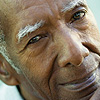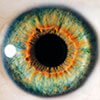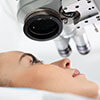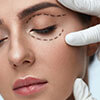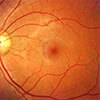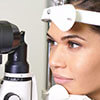Low Vision
Low Vision: Sometimes Eyeglasses Alone Aren’t Enough
More than three million people in the United States do not have normal vision even with corrective lenses. This may be due to congenital or acquired disorders of the eyes. If ordinary eyeglasses or contact lenses do not provide clear vision, one is said to have low vision. This should not be confused with blindness.
People with low vision still have useful vision that can often be improved with low-vision devices.
What is Low Vision
Different Devices Can Help Low Vision
Low vision can result from birth defects, inherited diseases, injuries, diabetes, glaucoma or macular degeneration.
Although reduced central or reading vision is most common, a person can have low vision with constriction of their side (peripheral) vision, a loss of color vision and/or contrast sensitivity.
Low vision devices or aides are available in optical and non-optical categories. Optical devices use lenses or combinations of lenses to provide magnification. They should not be confused with standard eyeglasses.
There are five main kinds of optical devices: magnifying spectacles, hand magnifiers, stand magnifiers, telescopes, and electronic magnifying devices such as the closed-circuit television. Different devices may be needed for different purposes. If possible, try the optical device before purchasing it and be sure you understand how to use it.
The simplest non-optical technique is to bring the object of interest closer. Non-optical low vision devices include large print books, check-writing guides, enlarged phone dials, talking appliances (timers, clocks, computers), and machines that scan print and read aloud.
Resources for People With Low Vision
Government and private agencies have social services available for people with low vision. For more information, contact the following resources:
SightConnection
(800) 458-4888
www.sightconnection.org
American Foundation for the Blind
(800) 232-5463
www.afb.org
National Library Service for the Blind and Physically Handicapped
(800) 424-8567
www.loc.gov/nls/
Lighthouse International
(800) 334-5497
www.lighthouse.org
National Eye Institute
(301) 496-5248
www.nei.nih.gov
Prevent Blindness America
(800) 331-2020
www.preventblindness.org
Visions/Services for the Blind and Visually Impaired
(212) 425-2255
www.visionsvcb.com
Veterans may contact the Visual Impairment Services coordinator at their local VA facility.


